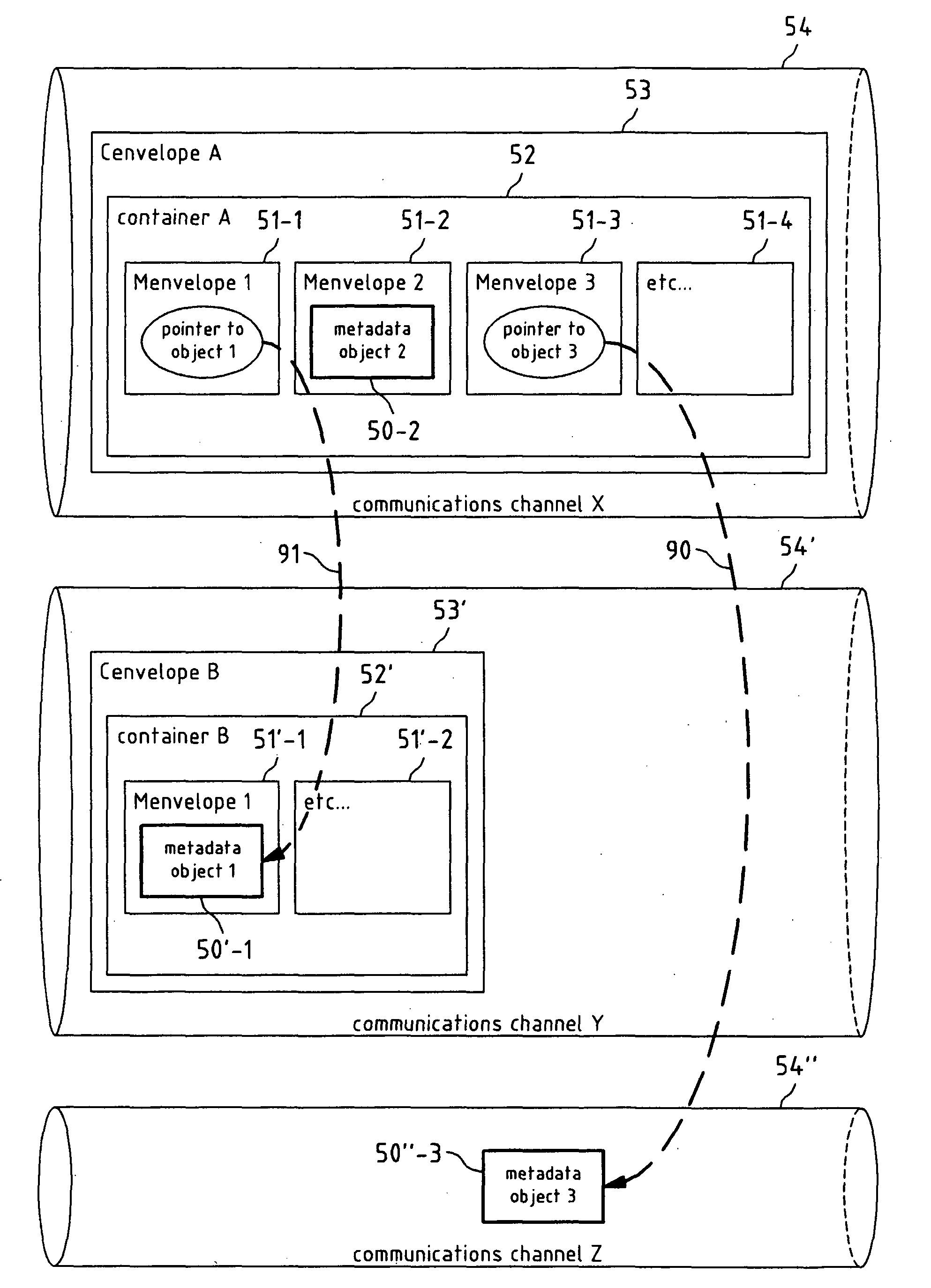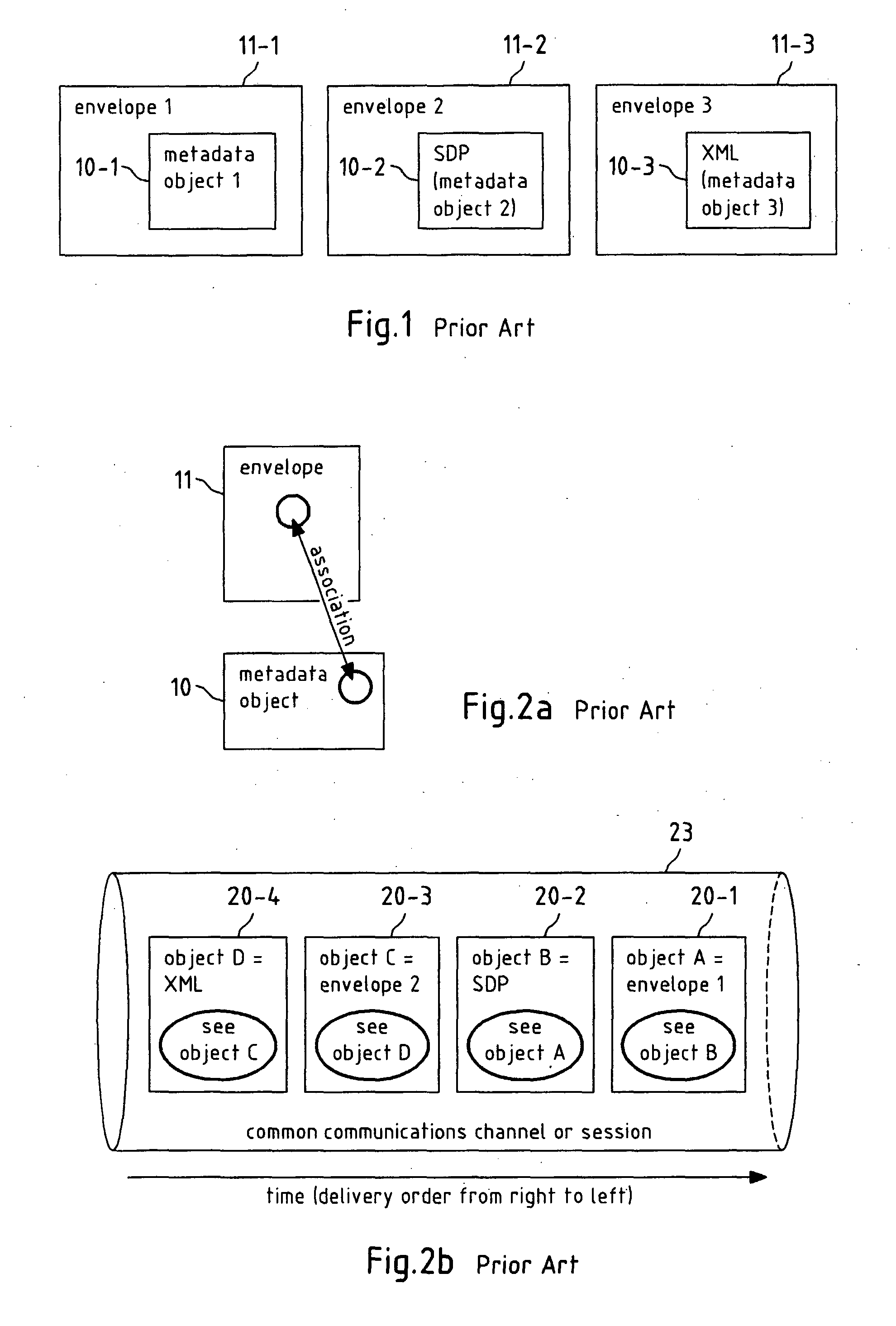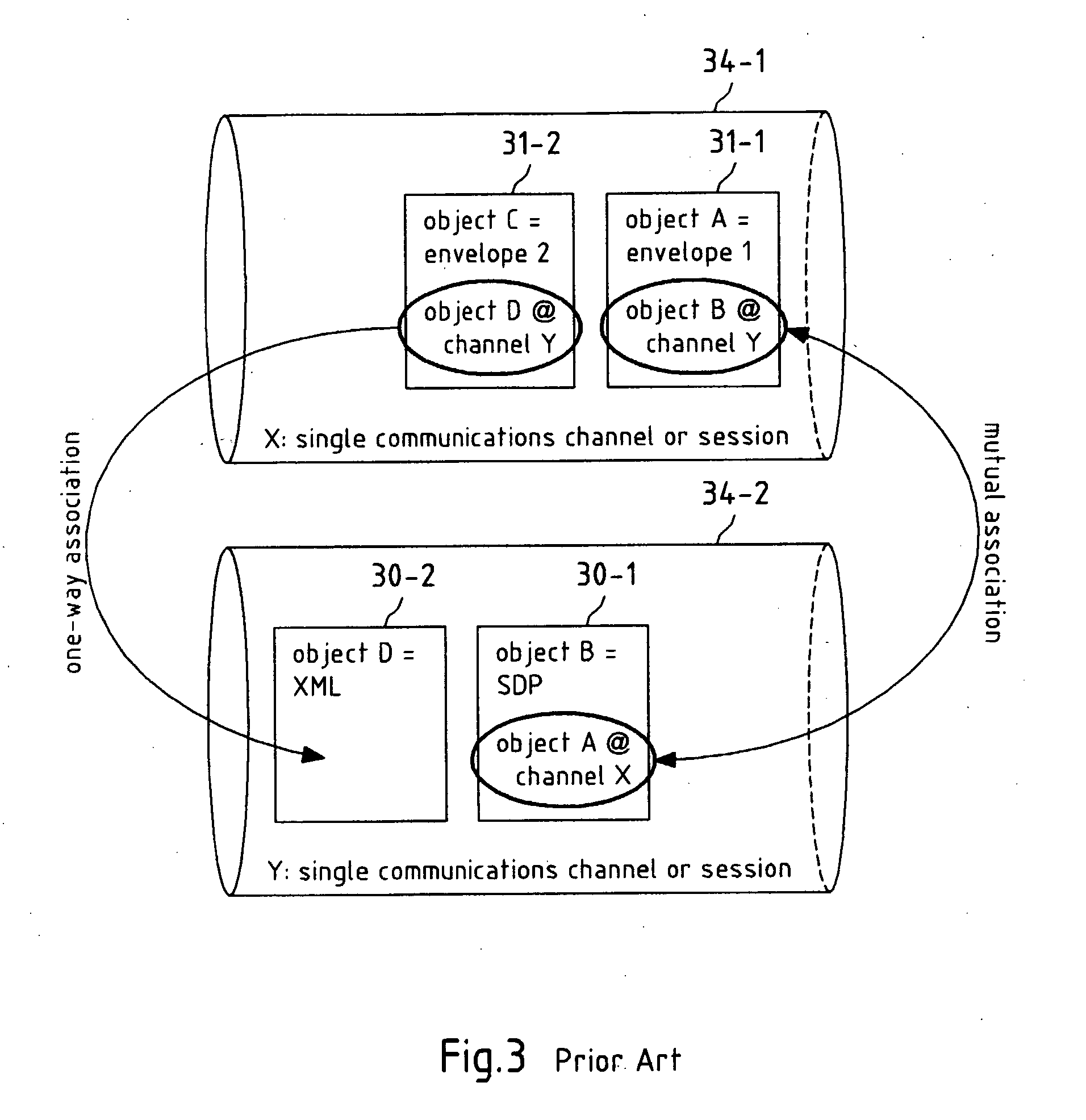Transfer of Data Objects
a data object and object technology, applied in the field of data object transfer, can solve the problems of large loss multiplier, unsatisfactory data object transfer, and multiple object downloads to receive envelopes and their metadata objects, and achieve the effect of efficient transfer of data objects
- Summary
- Abstract
- Description
- Claims
- Application Information
AI Technical Summary
Benefits of technology
Problems solved by technology
Method used
Image
Examples
Embodiment Construction
[0071]To achieve an efficient transfer of data objects, the present invention proposes to embed data objects and their associated data envelopes into a compound container object and to transfer the compound container object to a receiver. In the following, an exemplary implementation of this inventive concept will be described in the context of metadata objects that describe services or content that can be made available to a receiver. It is understood that the present invention is suited for the grouped transfer of all types of data objects and by no means shall be restricted to the transfer of metadata objects.
[0072]As shown in FIGS. 5a and 5b, respectively, within a compound container object 52, a metadata object 50 may itself be embedded in its metadata envelope 51 (FIG. 5a) or as a separate object in the compound container object (FIG. 5b). I.e., in illustrative syntax, “container(envelope(metadata))” and “container(envelope, metadata)” are both within the scope of this inventi...
PUM
 Login to View More
Login to View More Abstract
Description
Claims
Application Information
 Login to View More
Login to View More - R&D
- Intellectual Property
- Life Sciences
- Materials
- Tech Scout
- Unparalleled Data Quality
- Higher Quality Content
- 60% Fewer Hallucinations
Browse by: Latest US Patents, China's latest patents, Technical Efficacy Thesaurus, Application Domain, Technology Topic, Popular Technical Reports.
© 2025 PatSnap. All rights reserved.Legal|Privacy policy|Modern Slavery Act Transparency Statement|Sitemap|About US| Contact US: help@patsnap.com



